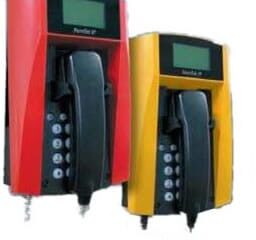In industries where explosive atmospheres are a constant risk, reliable communication is not just a convenience—it is a critical safety requirement. Atex telephones are specifically designed to operate safely in such hazardous environments, ensuring that workers can communicate effectively under extreme conditions. This article delves into the importance of Atex telephones, their features, and their applications in maintaining safety and operational efficiency.
Understanding Atex Certification
Atex (Atmosphères Explosibles) certification guarantees that a telephone can be safely used in environments with explosive gases, vapors, or dust. Industries like oil and gas, mining, chemical manufacturing, and pharmaceuticals often operate in such conditions. Atex-certified telephones comply with rigorous standards to prevent any risk of ignition, making them indispensable tools for communication in these high-risk settings.
Key Benefits of Atex Telephones
- Explosion-Proof Design Atex telephones are engineered to prevent sparks, high temperatures, or any form of ignition that could trigger an explosion. This explosion-proof design ensures safe communication, even in the most hazardous areas.
- Durability and Resilience Built to withstand extreme conditions, Atex telephones are made from robust materials that can endure harsh environments, including high humidity, dust, and temperature fluctuations. Their rugged construction ensures long-lasting performance and reliability.
- Clear and Reliable Communication In high-noise environments, clear communication is vital. Atex telephones are equipped with advanced audio technology to ensure clear sound quality, even amidst industrial noise. This feature is crucial for effective coordination and emergency response.
- Emergency Features Many Atex telephones come with built-in emergency functions, such as alarm buttons, automatic call prioritization, and pre-programmed emergency numbers. These features facilitate quick and efficient communication during critical situations, enhancing worker safety.
- Versatile Connectivity Options Atex telephones offer various connectivity options, including wired, wireless, and VoIP (Voice over Internet Protocol). This versatility ensures that communication networks can be tailored to the specific needs and infrastructure of the industrial site.
Applications of Atex Telephones
- Oil and Gas Industry In oil and gas facilities, reliable communication is crucial for coordinating operations, especially in remote locations like offshore platforms. Atex telephones enable seamless communication between crew members, control rooms, and emergency response teams, ensuring safety and efficiency.
- Chemical Manufacturing Chemical plants handle volatile substances that can create explosive atmospheres. Atex telephones allow workers to maintain constant communication without the risk of igniting hazardous materials, facilitating safe operations and quick response to any incidents.
- Mining Underground mining presents numerous challenges, including the presence of explosive gases and dust. Atex telephones provide a reliable means of communication between miners and surface control rooms, enhancing operational safety and coordination.
- Pharmaceuticals In pharmaceutical manufacturing, where combustible dust and volatile chemicals are common, Atex telephones ensure that workers can communicate safely and effectively. This is essential for maintaining safety protocols and responding to emergencies.
Features to Look for in Atex Telephones
- Robust Construction Look for telephones made from durable materials that can withstand physical impacts, extreme temperatures, and exposure to chemicals. A high ingress protection (IP) rating indicates resistance to dust and water.
- Advanced Audio Technology Clear communication is crucial in noisy industrial environments. Telephones with noise-canceling microphones and high-volume speakers ensure that messages are heard accurately.
- Emergency Functionality Features such as emergency call buttons, automatic call routing to emergency numbers, and loudspeaker functions are vital for responding swiftly in critical situations.
- Connectivity and Integration Ensure the telephone can integrate with existing communication systems, whether through traditional wired connections, wireless networks, or VoIP. Compatibility with other safety equipment, like alarm systems and intercoms, is also beneficial.
- User-Friendly Interface Atex telephones should have an intuitive interface with easy-to-use controls, even for workers wearing gloves. This ensures that the phones can be operated quickly and efficiently, especially during emergencies.
Conclusion
Atex telephones are an essential component of communication systems in hazardous industrial environments. Their explosion-proof design, durability, clear audio quality, and emergency features make them indispensable for ensuring safety and operational efficiency. By investing in Atex-certified telephones, industries can enhance their communication infrastructure, comply with safety regulations, and protect their workforce.
In extreme conditions where reliable communication is a lifeline, Atex telephones provide the assurance and functionality needed to maintain seamless and safe operations. Whether in oil and gas, chemical plants, mining, or pharmaceuticals, these specialized telephones are vital for connecting teams and safeguarding lives.
Expert Advice
For expert advice and guidance get in touch with Eaton our recommended partners.


